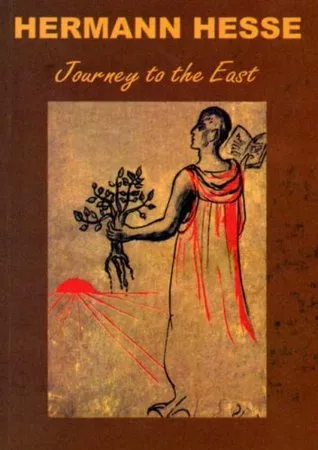Journey To The East
By (author): "Hermann Hesse"
Publish Date:
1932

ISBN8173031010
ISBN139788173031014
AsinJourney To The East
CharactersH.H., Leo Valdez
Original titleDie Morgenlandfahrt
Journey to the East is from the perspective of H.H. who becomes a member of The League, a timeless religious sect whose members include famous fictional & real characters, such as Plato, Mozart, Pythagoras, Paul Klee, Don Quixote, Tristram Shandy, Baudelaire & the ferryman Vasudeva, a Siddhartha character. A branch of the group goes on pilgrimage to the East in search of Truth. H.H. speaks of traveling thru both time & space, across geographies imaginary & real. Initially fun & enlightening, the Journey runs into crisis in a mountain gorge called Morbio Inferiore when Leo, a servant, disappears, causing them argue. Leo is described as happy, pleasant, handsome, beloved by all, good with animals. He's more than a simple servant, but nobody seems to get this. Nor does anyone wonder why the group dissolves in dissension & bickering after his disappearance. Instead they accuse Leo of taking with him objects which seem to be missing (which turn up later) & which they regard as important (which later appear unimportant). They blame him for their disintegration & failure. H.H. tries writing of the Journey years later. He's lost contact, believes the League no longer exists. He's unable to organize an account. He's sunk into disillusionment & despair since the failure. He's even sold the violin he played during the journey. At a friend's advice, he finds Leo &, having failed in his attempt to reestablish communication with him or even be recognized by him when he meets him in a park, writes him an impassioned letter of "grievances, remorse & entreaty", posting it that night. Next morning Leo appears at H.H.'s home to tell him he's to appear before the League's High Throne to be judged. Leo's actually League President. The Morbio Inferiore crisis was a test of faith which they failed--& H. H. continues to flunk tests even after learning this. The final dénouement is a fine stroke of Hesse's typical Eastern mysticism.